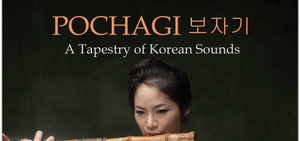Saturday Organ Concert Series: DONG-ILL SHIN

DONG-ILL SHIN
SOUTH KOREA
St Albans Cathedral, 5.30pm
Buxtehude (1637-1707) Magnificat BuxWV 203
J.S.Bach (1685-1750) Toccata and Fugue in F BWV 540
Brahms (1833-1897) Chorale Preludes, op.111
Franck (1822-90) O Welt, ich muss dich lassen Herzlich tut mich erfreuen Prelude and Fugue in G minor
Vierne (1870-1937) Prelude, Fugue & Variation from Symphony no. 3 in F sharp minor: Adagio Final
Winner of the Grand Prix de Chartres in 2006, Dong-ill Shin has since established a worldwide career as a concert organist and one of South Korea’s leading musicians. Following appointments in the USA, he returned to Seoul as Professor of Organ at Yonsei University.
The first recital of 2016 is another classic programme of music by major mainstream composers, from Germany and France. In Lutheran Germany the Magnificat was sung to the Latin psalm- tone known as the tonus peregrinus, which also appears in the Kyrie of Mozart’s Requiem. Buxtehude’s great hymn of praise follows the same form as his better-known Toccatas and Preludes, in which rhapsodic, freely-composed sections alternate with more rigorous contrapuntal writing. Although the tune is never clearly stated, its contours can be detected in all the fugal motifs. A prelude in two short sections (including an interesting pre-echo of Bach’s Dorian Toccata) is followed by a sequence of five fugues with brief interludes, building up to a grand finale.
His feet seemed to fly across the pedals as if they had wings, and mighty sounds filled the church’ : this description of Bach’s organ-playing perfectly suits the spectacular Toccata in F. But the intricate canons and sensational pedal solos of its opening pages are merely a prelude to what follows – emphatic detached chords, bouncing broken-chord figures for manual and pedal, and dramatic harmonic adventures as the music leaps from one key to another, maintaining an infectious rhythmic momentum that never flags from first note to last. The physical energy of the Toccata is balanced by the intellectual rigour of a magnificent Fugue with two subjects, which are first heard separately, and then combined.
Bach also makes his presence felt throughout the next four pieces from the 19th century. In the final months of his life Brahms confided his last thoughts to the organ, in a set of short chorale preludes in the style of Bach’s Orgelbüchlein; the elegiac mood of his late piano works is concentrated and intensified here in music whose apparent simplicity conceals depths that increase with every hearing. Composed some forty years earlier, when he was only 22, the Prelude & Fugue is a vigorous essay in the dramatic, rhetorical style of baroque works like Bach’s Chromatic Fantasia & Fugue. Franck’s Prelude is a more intimate, romantic re-creation of the style of a Bach trio, lightly scored for oboe, flute and bass. The lyrical Fugue rises to a climax, and then suddenly dissolves over a deep pedal note, leading into a concluding Variation not of the melody, but of the accompaniment; with magical effect the tune of the Prelude returns, accompanied this time by a delicate tracery of rippling semiquaver figuration.
I do not believe that a musician who, as a man, is incapable of love or suffering, will ever create anything of real beauty’; this was the artistic creed of the blind French organist Louis Vierne, and it found perfect expression in the rich scoring and soaring melodic lines of the Adagio from his Third Organ Symphony (1911). But the dreamy mood is abruptly dispelled by the Symphony’s stormy Finale. This fiery toccata is propelled by a will of steel, goaded along from start to finish by spinning patterns of semiquavers, and ending in a rampaging blaze of sound.




